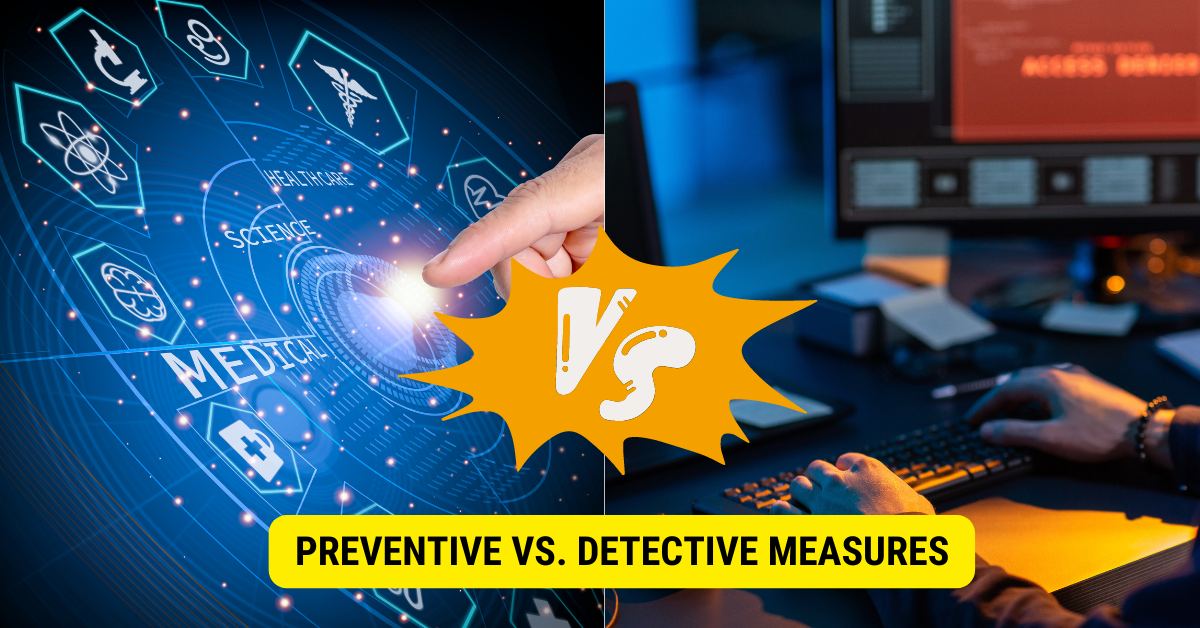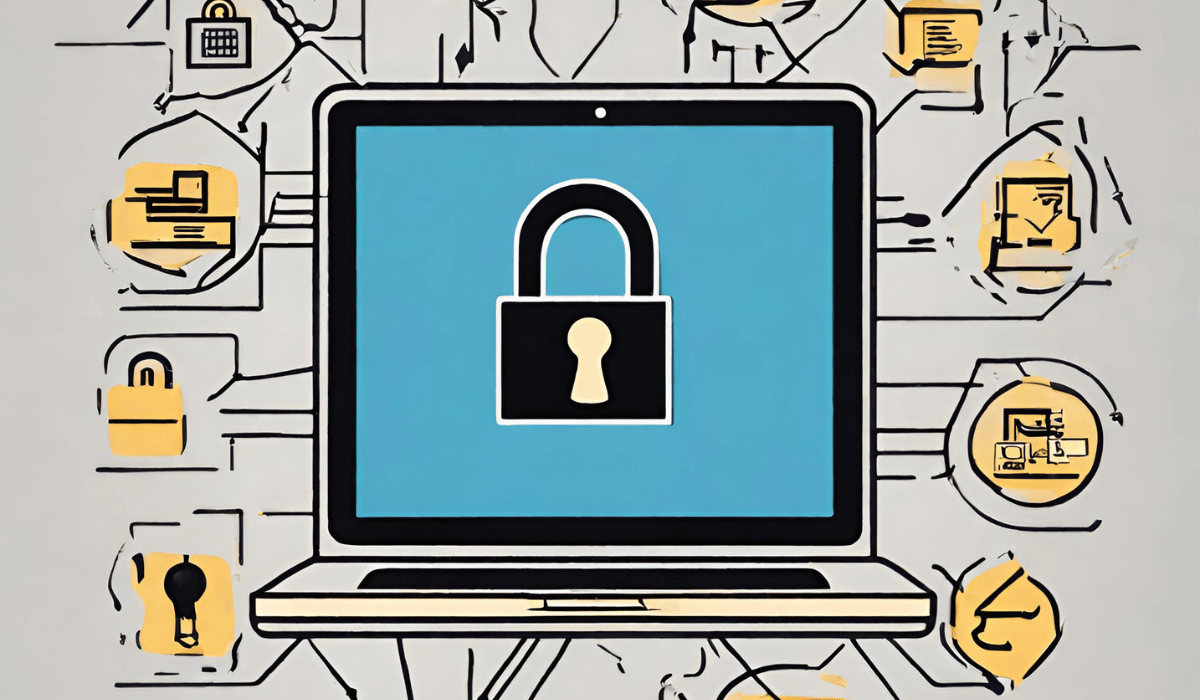Data is kept secure through a combination of preventive measures and effective detection strategies. Preventive measures include strong access controls, encryption, and regular patch management. Detection involves behavioral analysis, intrusion detection systems (IDS), and security incident and event management (SIEM). Security awareness training and fostering a security-conscious culture are also essential to safeguard data.
We delve into the world of data security, exploring how organizations can keep their sensitive information safe from cyber threats. We’ll highlight the importance of a proactive approach that combines prevention and detection, emphasizing the need for a defense-in-depth strategy. With guidance, I’ll uncover insights and key principles of data security and shed light on how data is kept secure in today’s technology-driven world, that will empower you to safeguard your data effectively.
Different Methods to Keep Data Secure
Keeping data secure is crucial to protect sensitive information from unauthorized access and cyber threats. There are several effective methods to ensure data security:
- Encryption: The Encryption of data at rest and in transit helps ensure that the information remains unintelligible and protected even if attackers gain access.
- Strong Access Controls: Implementing robust authentication mechanisms, like multi-factor authentication (MFA), limits unauthorized access to sensitive data.
- Regular Patch Management: Keeping Software and systems up-to-date with the latest patches helps fix vulnerabilities that attackers could exploit.
- Behavioral Analysis: Monitoring user behavior helps identify anomalies that could indicate a breach or suspicious activity.
- Intrusion Detection Systems (IDS): IDS examines network traffic to detect patterns and activities indicative of potential cyber threats.
- Security Incident and Event Management (SIEM): SIEM aggregates and analyzes log data to effectively detect and respond to security incidents.
- Data Backups: Regularly backing up data ensures that essential information can be recovered even during a breach or data loss.
- Network Segmentation: Dividing networks into smaller segments with restricted access limits the impact of a potential breach.
- Access Monitoring and Logging: Implementing access monitoring and logging helps track user activity and detect any unauthorized access attempts.
- Employee Training and Security Awareness: Regularly training employees on cybersecurity best practices and promoting a security-conscious culture within the organization helps strengthen the human element of data protection.
- Data Classification: Classifying data based on sensitivity enables the application of appropriate security measures to protect valuable information.
- Regular Security Audits: Conducting regular security audits helps identify vulnerabilities and weaknesses in the organization’s data security measures.
- Physical Security: Ensuring physical security measures, such as restricted access to data centers and server rooms, prevents unauthorized physical access to sensitive data.
- Data Loss Prevention (DLP) Solutions: Implementing DLP solutions helps prevent data leaks and unauthorized data transfers.
- Cloud Security: For data stored in the cloud, employing robust cloud security measures and using reputable cloud service providers is essential.
By combining these methods and maintaining a proactive and vigilant approach to data security, organizations can significantly diminish the risk of data breaches and cyberattacks, safeguarding their valuable information effectively.
Prevention is Ideal, But Detection is a Must

Preventive vs. Detective Measures
Many organizations heavily invest in preventive measures, such as firewalls, user awareness programs, and security incident and event management solutions. However, relying solely on prevention is not enough. Studies have shown that even well-protected companies with strong preventive measures have suffered major data breaches. The real secret lies in striking a balance between prevention and detection.
The Importance of Accurate Network Diagrams
An accurate, up-to-date network diagram is the foundation of effective cybersecurity. It clearly explains how systems are interconnected, enabling accurate risk assessment and decision-making.
Inbound Prevention vs. Outbound Detection
Many organizations concentrate their energy and resources on inbound prevention, overlooking the significance of outbound detection. Data breaches and exfiltration usually occur on outbound traffic. Thus, a strong focus on outbound detection is crucial for early breach detection.
Ensuring Data Security While Maintaining Efficiency
Embrace Basic Cybersecurity Hygiene
Maintaining basic cybersecurity hygiene is the first step to securing data without compromising employee efficiency. This includes using complex passwords or passphrases, two-factor authentication, and effective endpoint security solutions.
Implement a Defense-in-Depth Strategy
A defense-in-depth strategy involves layering multiple security measures to protect against various attack vectors. This approach ensures that even if one layer fails, others will continue safeguarding the organization.
Stay Informed and Remain Vigilant
Staying informed about emerging threats and best practices is essential. Cybersecurity is an ongoing effort, and adopting new security measures and technologies is vital to secure data.
Prevention and Detection: The Twin Pillars of Data Security
The Power of Prevention
Preventive measures form the first line of defense against cyberattacks. These include:
- Strong Access Controls: Implementing robust authentication mechanisms, like multi-factor authentication (MFA), limits unauthorized access.
- Encryption: Encrypting data at rest and in transit ensures that the information remains unintelligible even if attackers gain access.
- Patch Management: Regularly updating Software and systems helps fix vulnerabilities that attackers could exploit.
The Essence of Detection
While prevention is vital, it is not foolproof. Therefore, detection plays a crucial role in identifying and mitigating attacks. Effective detection strategies include:
- Behavioral Analysis: Monitoring user behavior helps identify anomalies that could indicate a breach.
- Intrusion Detection Systems (IDS): IDS examines network traffic to detect suspicious patterns and activities.
- Security Incident and Event Management (SIEM): SIEM aggregates and analyzes log data to detect potential security incidents.
The Human Element: Training and Awareness

Humans are the weakest link and the first line of defense in data security. Training employees and promoting security awareness is essential to prevent accidental data breaches caused by human error.
- Cybersecurity Training: Employees should receive regular training on recognizing phishing emails, using secure passwords, and identifying potential threats.
- Promoting a Security Culture: Fostering a security-conscious culture encourages employees to prioritize data protection in their daily activities.
Cybersecurity Best Practices for Individuals
Data security is not only a concern for organizations but also individuals. Personal data is valuable and can be targeted by cybercriminals. Follow these best practices to secure personal information:
- Use Strong Passwords: Utilize unique and complex passwords for different accounts and enable two-factor authentication where possible.
- Keep Software Updated: Regularly update operating systems, applications, and antivirus software to patch vulnerabilities.
- Be Cautious Online: Avoid clicking suspicious links or downloading files from unknown sources to prevent malware infections.
Key Takeaways
- Data security relies on a combination of preventive measures and effective detection strategies.
- An accurate, up-to-date network diagram is the foundation of effective cybersecurity, enabling better risk assessment and decision-making.
- Outbound detection is crucial for early breach detection, as data breaches and exfiltration often occur on outbound traffic.
- Embrace basic cybersecurity hygiene and a defense-in-depth strategy to protect data without compromising employee efficiency.
- Stay informed about emerging threats and remain vigilant in adopting new security measures to stay ahead of cyber adversaries.
- Training employees and promoting security awareness is vital in strengthening the human element of data protection.
- Individuals should follow best practices such as using strong passwords and keeping Software updated to secure personal data online.
FAQs
What is the importance of data encryption in data security?
A: Data encryption ensures that sensitive information remains unreadable to unauthorized individuals, even if it is intercepted during transmission or storage. It adds an additional layer of protection to safeguard data from potential breaches.
How can individuals protect their data online?

A: Individuals can protect their data by using strong and unique passwords, regularly updating Software, and exercising caution when sharing information online. Avoiding suspicious links and downloads is essential to prevent falling victim to cyberattacks.
Can we keep our information secure while allowing our employees to be efficient?
A: Absolutely! Companies can balance data security and employee productivity by practicing basic cybersecurity hygiene, implementing a defense-in-depth strategy, and staying informed about new threats.
What are some essential tips to keep personal and small business data safe?
A: – Use complex passwords with uppercase letters, numbers, and symbols.
- Change passwords regularly and avoid reusing them.
- Verify links and downloads from unknown sources.
- Utilize secure websites (check for “https” in the URL).
- Be cautious of oversharing on social media to prevent hackers from profiling you.
- Consider using a VPN for added online security.
Conclusion
Data security is an ongoing battle against ever-evolving cyber threats. Organizations and individuals can better protect their sensitive information by implementing preventive measures, fostering a culture of security awareness, and utilizing robust detection strategies. In a world where data is invaluable, staying vigilant and proactive is key to keeping data secure and out of the hands of cyber adversaries.
